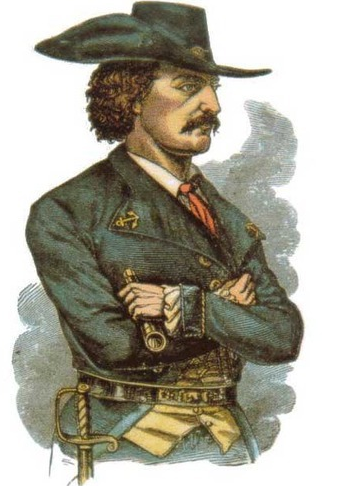Include a Topper!
-
Happy Birthday Banner
$9.00 -
Gingerbread Cake Topper
$15.00 -
Turkey Cake Topper
$15.00
Add Ons
Your cart is currently empty!
Since 1949 celebrating 75 years. Order online or call us at 1 800 GAMBINO (426-2466)

Jean Lafitte: we know him as the pirate hero of New Orleans, others know him as the most successful smuggler in the history of the Spanish Main, and some even know him as the greatest scoundrel to sail the seas. With the clouds of myth surrounding this infamous character, it’s hard to which claims are true. It’s worth a try, though, to discover the history of the pirate so revered we named a national park after him.

Pre-Pirate Preamble
It’s difficult to confirm not only where Jean Lafitte (also spelled Laffite) was born, but when. Some sources estimate he was born as early as 1770, where others swear it wasn’t until closer to 1780, either way he was a man of the late 18th century and the early 19th. The claims surrounding his origin of birth are just as foggy, ranging from Bordeaux, France, to St. Domingue in what is now Haiti.
He is known to have one brother whose name was Pierre and both were confirmed to be living in New Orleans by the year 1784. Their mother was married to a New Orleanian merchant named Pedro Aubrey who is assumed to have taught Jean the ways of sailing and helped him to learn the intricacies of the Mississippi bayou waters.
A Bit of Smuggling Here, A Dash of Privateering There
While it is Jean’s name we remember, it is actually through his and Pierre’s brotherhood that he was able to build his business as a pirate. Pierre originally owned a blacksmithing shop in New Orleans at the start of the 1800’s. It is through this blacksmith shop that Jean Lafitte got his start in smuggling. Early on the shop became a headquarters for smugglers to store and traffic their stolen goods. As the smuggling business grew Jean became established as a leader among the colony of thieves while Pierre acted as the second side to his Janus coin and became the foremost fencer of the smuggled goods.
The Lafitte business, though strong from the start, was emboldened by the Embargo Act of 1807. The United States government placed an embargo that forbid American ships from docking internationally in an effort to sever trade with Britain. Little did the US government know that this would bring an immense boom to the smuggling trade. Not only did the Lafittes become more prosperous than ever in their illicit trade, but, much to the government’s chagrin, they became greatly respected by the New Orleanian locals who were grateful for the goods that the brothers and their crews brought in illegally. Not to mention the fact that Jean’s crew numbers grew exponentially; many of the sailors who became unemployed due to the instantiation of the the embargo flocked to the Lafittes’ side.
Unfortunately this growth did not go unnoticed by the US government, and both Jean and his men were run out of New Orleans. Not to worry though, Lafitte built a colony of smugglers on an island south of the city called Barataria Bay. From this port island Lafitte focused his pirating efforts on the Spanish Main, constantly plundering Spanish commerce vessels. He even became a privateer* for the Republic of Cartagena (in what is now Colombia) and gained commissions on their behalf.
The Part Wherein Infamous Pirate Becomes Local Hero
In the early months of 1812 Lafitte was propositioned by the British government to cede his hold on the Barataria Bay in order to allow the British navy easier access to attack the mainland of the US. Lafitte was offered a bribe of $30,000 (quite the pay day back then) as well as a captaincy in the Royal Navy. After accepting the bribe, Lafitte immediately sailed for New Orleans and met with Governor W.C.C. Claiborne to warn him of the British advance and imminent attack.
Not only did Claiborne not take Lafitte’s warning for truth, but he got so angry with Lafitte that he ordered the US navy to attack Lafitte’s smuggling colony on Barataria Bay. The attack was not very successful, with only a sparse few of Lafitte’s ships and crew being captured. Lafitte’s business remained intact despite Claiborne’s efforts.
Lafitte would not be swayed, however, in his plight to save New Orleans. So come 1814, Lafitte offered both the service of his crew and himself to General Andrew Jackson in the defense of New Orleans. Lafitte provided well-bodied fighting men as well as flint and gunpowder from his mass smuggling stores in exchange for pardons. Jackson gratefully accepted and the pirates of Barataria Bay (come to be known as the Baratarians) fought valiantly in the Battle of New Orleans at the end of 1814.
Lafitte and his crew were all given pardons by President James Madison himself, and they walked the streets of New Orleans as free men. But this jaunt lasted only so long. The pirating life began to call for Lafitte again, and just one year after being pardoned he set back out for high sea smuggling.
Lafitte’s Later Years
The pirating life suited Lafitte well. After getting back to smuggling in 1816, he gained over 1000 loyal crew members and in 1817 built a pirate commune in what is now Galveston, Texas. He called this commune Campeche and it became the new depot for his smuggling operation. Lafitte even became the governor of Campeche for a short while in 1819. It’s said that this commune grew so big and successful, that in an attempt to avoid persecution by the US government, Lafitte gathered his favorite crew members aboard his favorite ship, The Pride, and sabotaged the operation by burning Campeche down as he sailed away.
What happens next is much like how Jean Lafitte’s story begins, largely unknown. Some say he continued pirating along the Spanish Main and Yucatan Peninsula until he died sometime in the 1820’s. While a journal uncovered in the 1940’s, said to be Lafitte’s, proclaimed that he lived as a wealthy citizen of New Orleans well into the 1850’s. It’s unclear which version is true, whether the journal was falsified, whether Lafitte died at sea, or whether he hid under the nose of the US government the whole time. Though one thing is for sure: Jean Lafitte represents the greatest part of New Orleans, that what may sometimes be belie the law can also be the greatest good.
*What differs a pirate from a privateer is that a privateer is contracted or commissioned by a government agency to attack or plunder enemy ships, especially during war time. Essentially a privateer’s work is governmentally sanctioned, where a pirate is a free entity whose work is personally sanctioned.